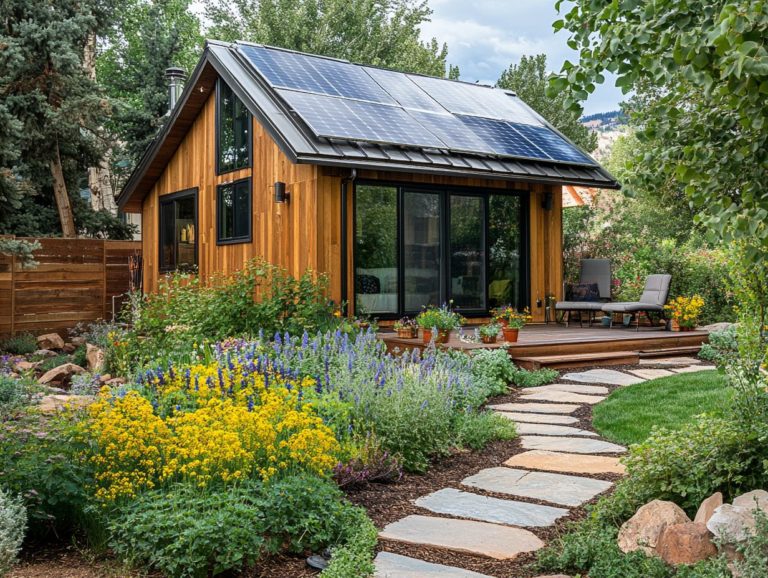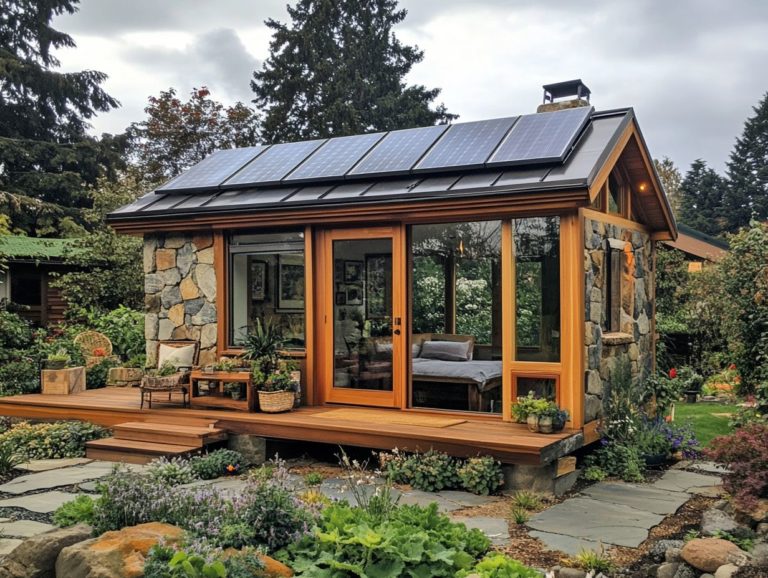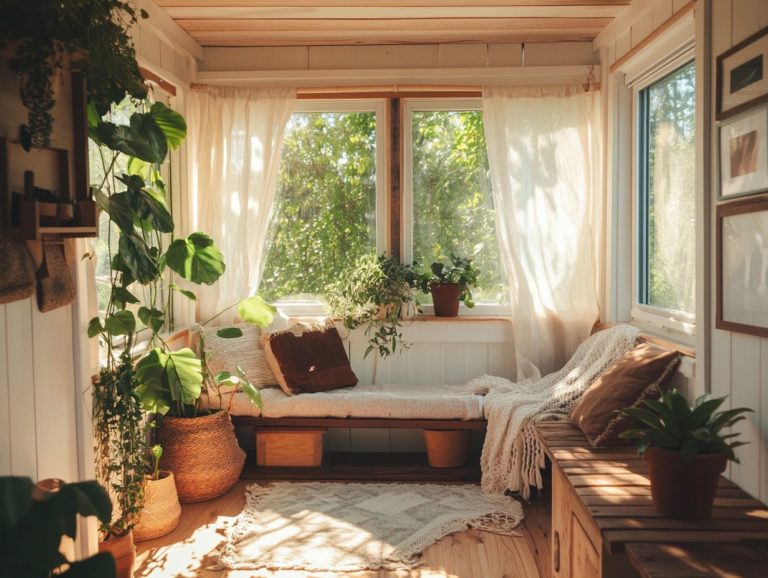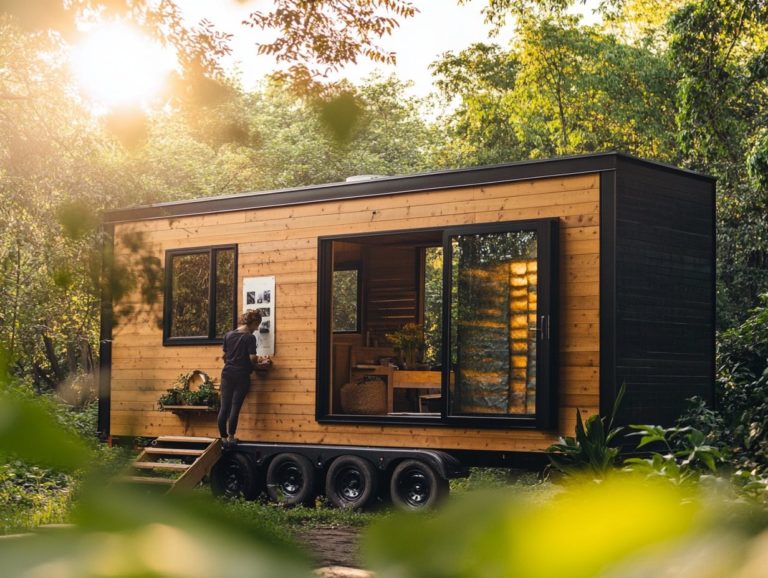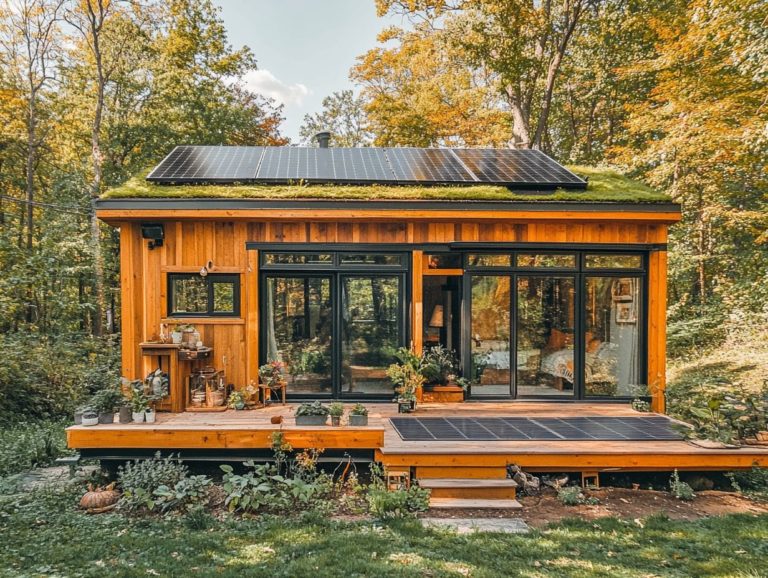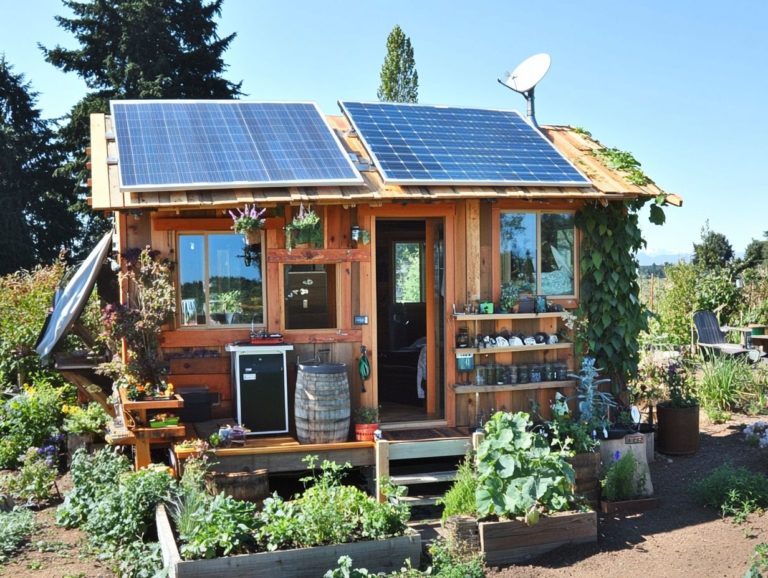5 Popular Green Roof Materials for Tiny Houses
As the tiny house movement gains traction, you ll find that the charm of green roofs is particularly enticing for eco-conscious homeowners like yourself.
These living roofs do more than just enhance the visual appeal of your home; they offer a multitude of environmental benefits as well. Whether you opt for sedum mats or native plants, selecting the right materials can turn your compact space into a sustainable sanctuary.
This article delves into five popular green roof materials, detailing their advantages, maintenance requirements, and contributions to environmental sustainability. It also addresses some common misconceptions surrounding green roofs.
Discover how a green roof can transform your tiny home into an eco-friendly paradise!
Contents
- Key Takeaways:
- 1. Sedum Mat
- 2. Grass and Wildflower Mix
- 3. Moss
- 4. Succulents
- 5. Native Plants
- What Are Green Roofs and Why Are They Popular for Tiny Houses?
- What Are the Benefits of Using Green Roof Materials for Tiny Houses?
- What Factors Should Be Considered When Choosing Green Roof Materials for Tiny Houses?
- What Are the Maintenance Requirements for Green Roofs?
- How Can Green Roofs Help with Environmental Sustainability?
- What Are Some Common Misconceptions About Green Roofs?
- Frequently Asked Questions
- What are the 5 Popular Green Roof Materials for Tiny Houses?
- Why is Sedum a Popular Green Roof Material for Tiny Houses?
- What Makes Grass a Suitable Green Roof Material for Tiny Houses?
- How is Moss Used as a Green Roof Material for Tiny Houses?
- Why are Succulents a Popular Choice for Green Roofs on Tiny Houses?
- What are the Benefits of Using Wildflowers as a Green Roof Material for Tiny Houses?
Key Takeaways:
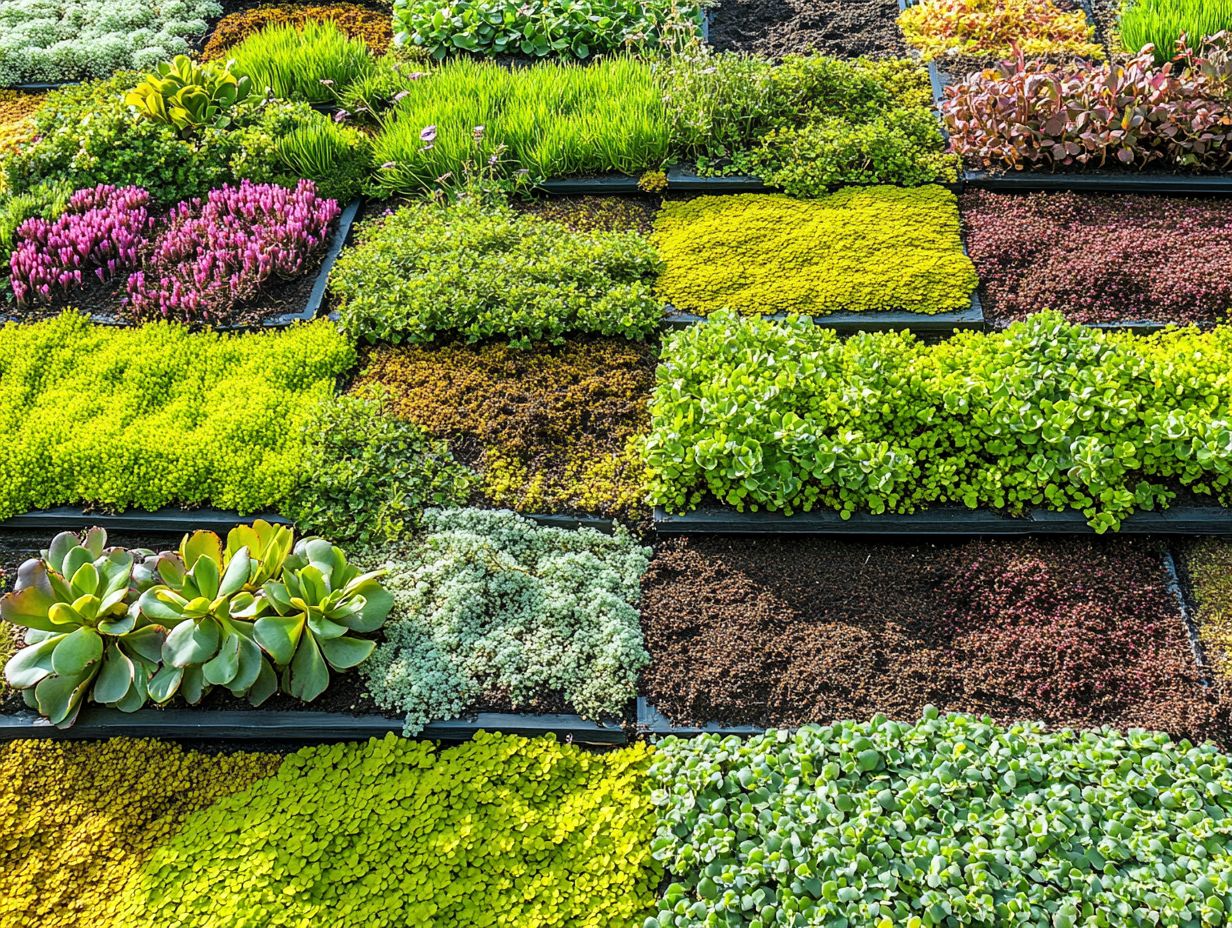
- Sedum mat is a popular green roof material for tiny houses due to its low maintenance and drought-resistant qualities.
- Mixes of grass and wildflowers provide a beautiful and natural option for tiny house green roofs, while also attracting pollinators and promoting a variety of plants and animals.
- Moss is a versatile and low-maintenance option for green roofs, providing insulation and water retention benefits.
1. Sedum Mat
Sedum mats are crafted from different sedum species. They are lightweight, low maintenance, and drought-resistant, making them ideal for tiny homes and urban spaces focused on eco-friendly design.
These mats not only enhance the visual appeal of your property but also provide outstanding insulation. They help maintain comfortable indoor temperatures through the changing seasons.
As tiny homes rise in popularity, incorporating sedum can yield significant energy savings. The plants absorb heat and help lower energy consumption for heating and cooling.
The vibrant colors and unique textures of sedum species add a distinctive aesthetic touch. This elevates the curb appeal and overall design quality of compact living spaces.
Homeowners and builders are increasingly realizing how these living roofs can seamlessly blend functionality with natural beauty, championing sustainability in an attractive manner.
2. Grass and Wildflower Mix
A grass and wildflower mix is a superb choice for your green roofs. It delivers remarkable ecological benefits.
This combination promotes a variety of plants and animals, enhances air quality, and provides a welcoming habitat for pollinators. All this while elevating the aesthetic charm of tiny homes.
In urban settings, this delightful mix transforms rooftop gardens into vibrant spaces. It also plays a crucial role in heat reflection, effectively lowering temperatures in the surrounding areas.
By insulating buildings, these resilient plants reduce the need for artificial cooling. This can lead to significant energy savings and a smaller carbon footprint.
Incorporating native wildflowers boosts environmental sustainability directly. It also creates a thriving habitat for insects and birds, supporting local ecosystems.
This harmonious relationship between plants and urban living cultivates a healthier environment, inspiring communities to adopt greener practices and ultimately enhancing their quality of life.
3. Moss
Moss stands out as a truly innovative choice for your green roof. It is celebrated for its remarkable water retention capabilities, minimal maintenance needs, and resilience against various weather conditions.
This makes it an enticing option for eco-conscious tiny home builders like you.
Different varieties of moss, including sedum and sphagnum, flourish in rooftop environments. They offer not just visual charm but also practical advantages.
These mosses effectively absorb rainwater, reducing runoff while enhancing insulation to keep your interiors cooler in summer and warmer in winter.
In bustling urban settings, moss-covered roofs play a vital role in alleviating the heat island effect. They foster cooler temperatures and promote biodiversity.
The lush greenery appeals to those of you seeking a more natural aesthetic. It transforms your space into a serene haven that invites tranquility amidst the concrete hustle.
Don’t miss the chance to elevate your living space! Start exploring these green roof options today!
4. Succulents
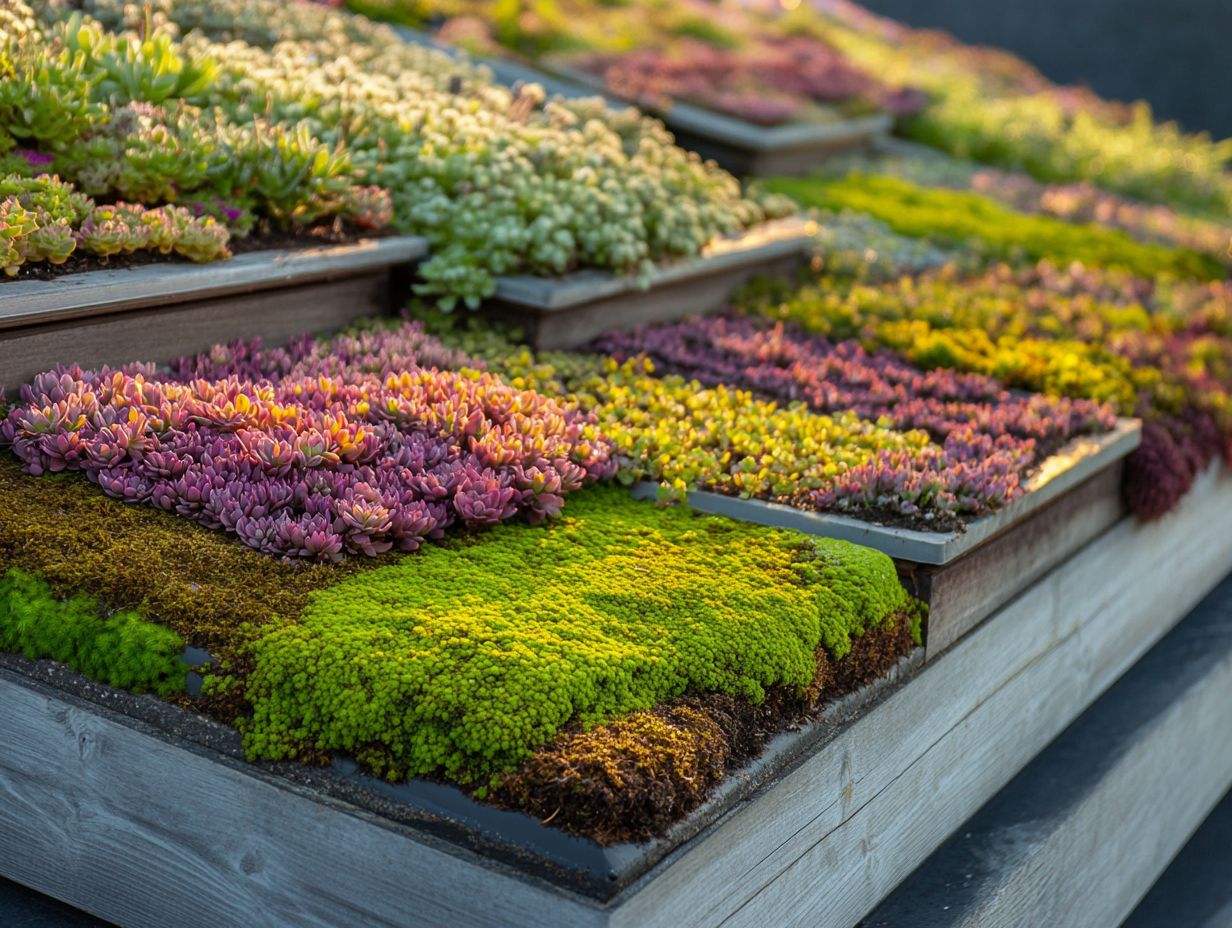
Succulents are increasingly popular for green roofs due to their water storage abilities, vibrant colors, and low maintenance needs. They are an ideal choice for tiny homes that prioritize sustainable living.
These resilient plants create stunning visuals with their diverse shapes and hues. They also greatly enhance energy efficiency by providing insulation, helping to maintain comfortable indoor temperatures and ultimately lowering energy costs.
Varieties like Sedum and Aloe thrive on rooftops, offering a beautiful mix of textures and colors. This can transform any urban environment into a lush sanctuary.
When selecting plants, consider local climate conditions and choose species that require minimal watering. Regular care includes checking for pests and ensuring proper drainage to support growth and extend plant life.
5. Native Plants
Using native plants on green roofs is a great sustainable choice. It supports local ecosystems and helps reduce maintenance costs, enhancing the environmental impact of tiny homes and urban living.
By incorporating these resilient species, you create a thriving habitat that attracts diverse pollinators and wildlife, which are essential for maintaining ecological balance. Native plants are often drought-resistant, significantly reducing water consumption and relieving local water supply pressures. Their deep root systems enhance soil structure and improve water retention, optimizing irrigation.
These plants also provide natural insulation, helping regulate indoor temperatures and enhancing weather resistance, which boosts energy efficiency. This complete strategy allows you to contribute to a living environment that promotes a healthier planet.
What Are Green Roofs and Why Are They Popular for Tiny Houses?
Green roofs offer a modern method to roofing by seamlessly integrating living vegetation into your home. With benefits like enhanced energy efficiency, improved insulation, and striking curb appeal, they are becoming a favored option for tiny houses focused on eco-friendly design and sustainable practices.
These systems include several layers: a waterproof membrane that prevents water from leaking into your home, a drainage system, a growing medium, and a variety of plants. This combination enhances the visual appeal and serves practical functions, aligning with the top 10 sustainable building techniques for tiny houses.
For tiny home residents, green roofs provide amazing benefits that you’ll love! They lower maintenance costs by naturally regulating temperature and managing rainwater. They also protect your building’s structural integrity from harsh weather, and using the best green roofing materials for tiny houses can transform your rooftop into a vibrant garden that promotes biodiversity, even in urban areas.
What Are the Benefits of Using Green Roof Materials for Tiny Houses?
Implementing green roof materials in your tiny home opens up numerous advantages. You ll enjoy enhanced energy efficiency, reduced maintenance costs, and improved insulation all while positively impacting the environment and promoting a sustainable lifestyle.
These roofs can significantly decrease your reliance on energy for heating and cooling, leading to savings on your utility bills. You’ll also improve air quality by filtering pollutants and providing fresh oxygen, creating a healthier living environment.
With effective thermal regulation, your tiny home will maintain comfortable temperatures year-round. Plus, this design choice enhances the aesthetic appeal and can increase your property value, making your eco-friendly home more attractive to environmentally conscious buyers.
What Factors Should Be Considered When Choosing Green Roof Materials for Tiny Houses?
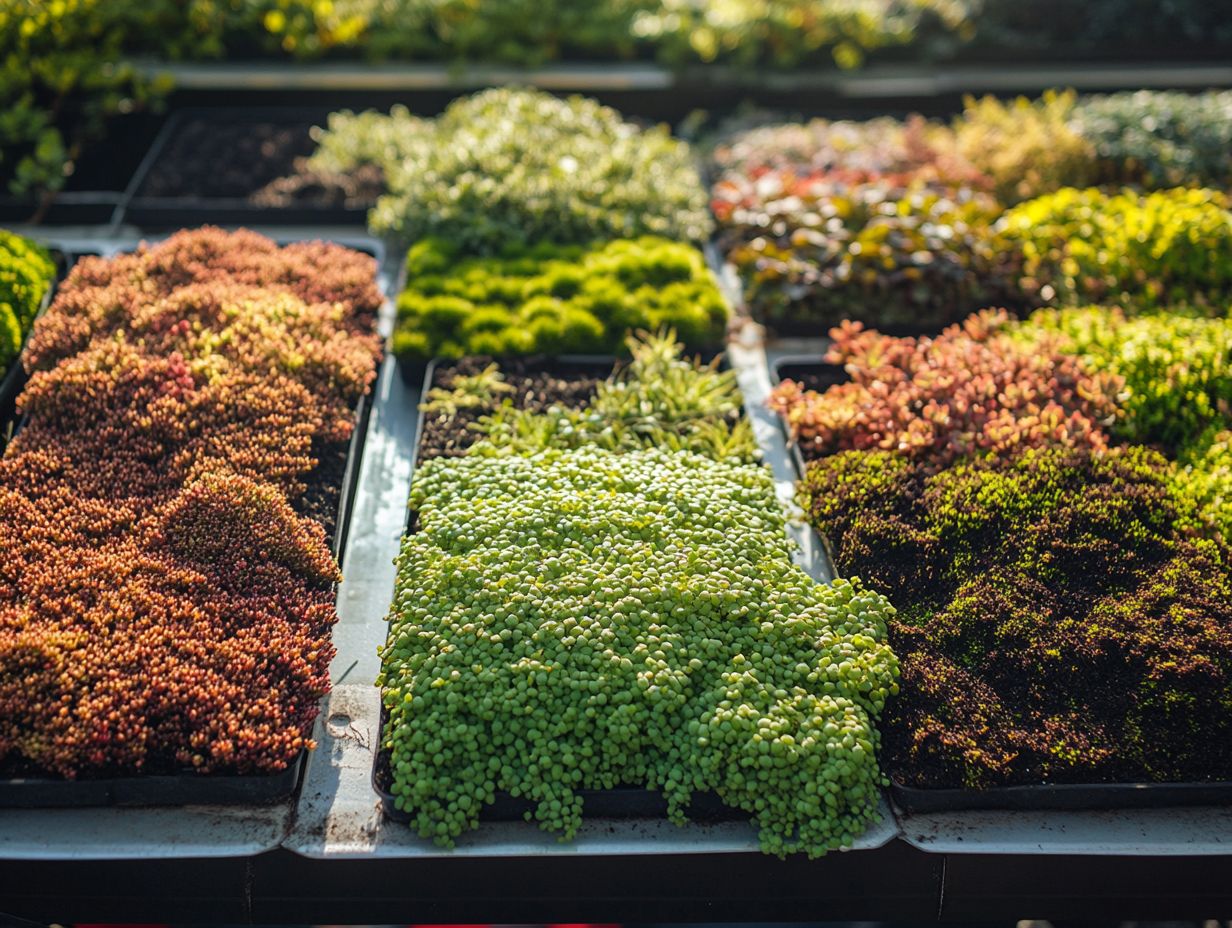
When choosing green roof materials for your tiny house, keep key factors in mind. Consider roofing materials, your budget, maintenance needs, and how your local climate affects plant choices.
Evaluate options like sedum, succulents, and moss. It’s vital to know how these plants perform in varying temperatures and humidity levels.
Sedum thrives in dry conditions, making it ideal for areas with little rain. Succulents need well-drained soil and plenty of sunlight, while moss prefers cooler, shaded spots.
Talking to local roofers and contractors who specialize in green rooftops can provide valuable insights. They can suggest plants that will thrive and help reduce your maintenance workload.
What Are the Maintenance Requirements for Green Roofs?
Maintenance for green roofs varies based on the plant species and roofing design you choose. Regular inspections, watering, and weed control are essential for keeping your rooftop garden healthy.
These tasks enhance both the beauty and functionality of your green roof. They also play a crucial role in stormwater management and insulation.
Regular checks help you spot potential problems early, like drainage issues or pests, which can damage your roof’s durability.
By staying on top of maintenance, you can enjoy your green roof’s benefits for years. This investment can lead to ecological and financial rewards.
How Can Green Roofs Help with Environmental Sustainability?
Green roofs are vital for promoting environmental sustainability in cities. They help reduce urban heat, improve air quality, and manage stormwater, making them a smart choice for tiny homes.
These green spaces significantly increase urban biodiversity by providing habitats for various creatures, such as birds and beneficial insects. For example, Chicago s City Hall has a green roof that supports local wildlife and reduces energy use.
In Toronto, the extensive network of green roofs helps prevent flooding during heavy rains. These designs create beautiful spaces that connect residents with nature, enhancing overall well-being and resilience in city life.
What Are Some Common Misconceptions About Green Roofs?
Green roofs are growing in popularity. However, they often come with misconceptions about their cost. Many people think they are prohibitively expensive to install and maintain. In truth, they can deliver long-term savings and a host of environmental benefits, especially for tiny homes.
Your initial investment can be more than justified by reduced energy costs, managing rainwater, and even increased property values. Many homeowners think choosing plants for these roofs is complicated. The reality is there’s a robust selection of drought-resistant options, such as sedum and wild thyme, that thrive beautifully in rooftop settings. Additionally, incorporating sustainable building materials for tiny homes can enhance both durability and eco-friendliness.
Concerns about upkeep can also be exaggerated. Routine maintenance tasks like weeding or occasional irrigation can typically be managed with minimal effort, keeping those green roofs vibrant and functional. Once you clear up these myths, you’ll see how green roofs revolutionize our cities, promoting sustainability and enhancing urban living, while also considering budget considerations and maintenance costs.
Frequently Asked Questions
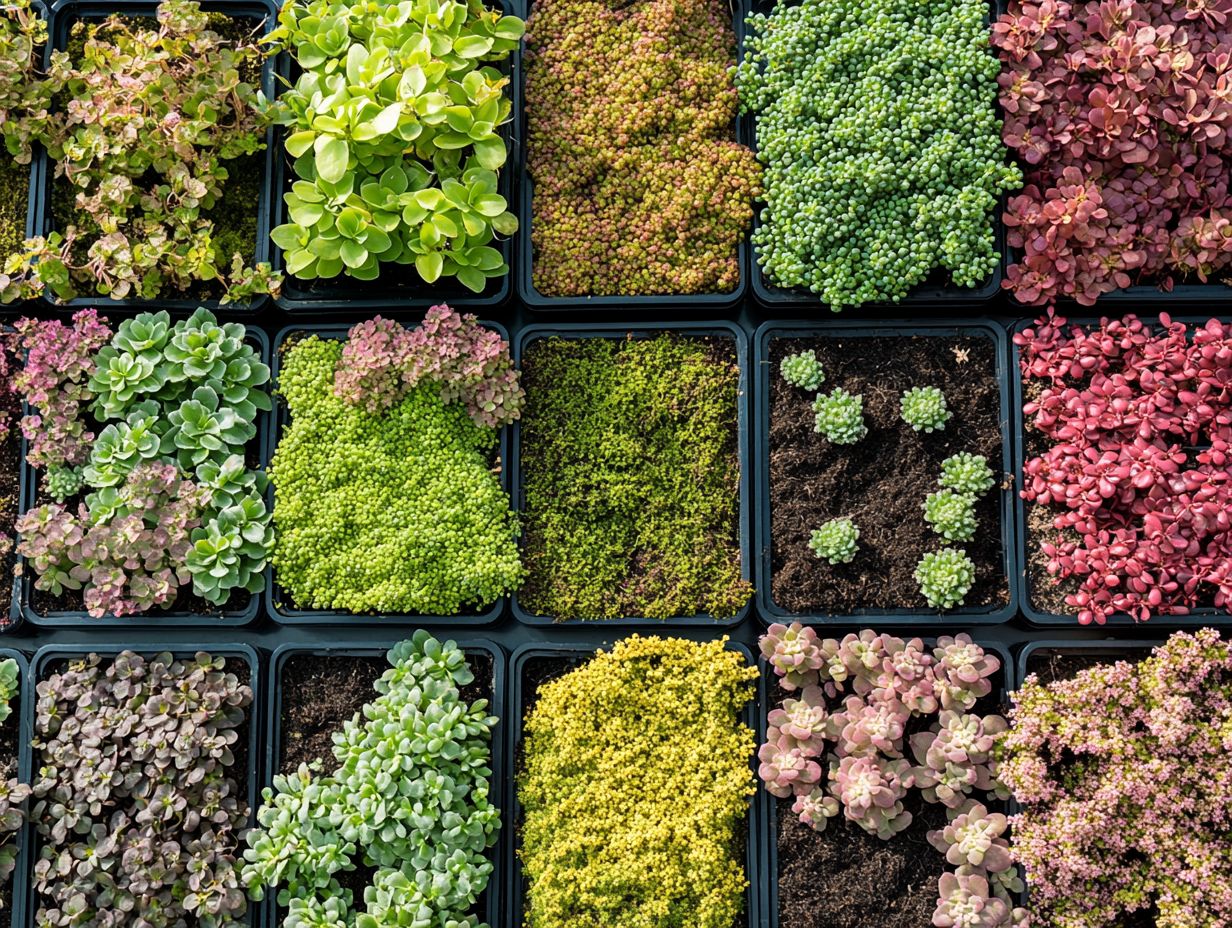
What are the 5 Popular Green Roof Materials for Tiny Houses?
The 5 popular green roof materials for tiny houses are sedum, grass, moss, succulents, and wildflowers.
Why is Sedum a Popular Green Roof Material for Tiny Houses?
Sedum is a popular green roof material for tiny houses because it is low-maintenance, drought-resistant, and able to thrive in various conditions.
What Makes Grass a Suitable Green Roof Material for Tiny Houses?
Grass is suitable for tiny houses because it provides natural insulation, absorbs rainwater, and can be easily grown on a lightweight substrate.
How is Moss Used as a Green Roof Material for Tiny Houses?
Moss is planted in a shallow layer of soil, providing a soft, natural look to the roof. Its weather resistance properties allow it to thrive in different climates.
Why are Succulents a Popular Choice for Green Roofs on Tiny Houses?
Succulents are popular because they require minimal watering and can survive in hot and dry climates.
What are the Benefits of Using Wildflowers as a Green Roof Material for Tiny Houses?
Wildflowers attract pollinators, reduce stormwater runoff, and add aesthetic value to the roof.
Ready to transform your space with green roofs? Discover more today!

